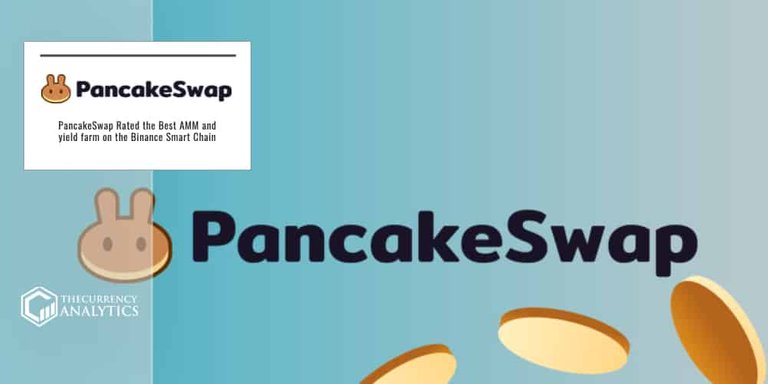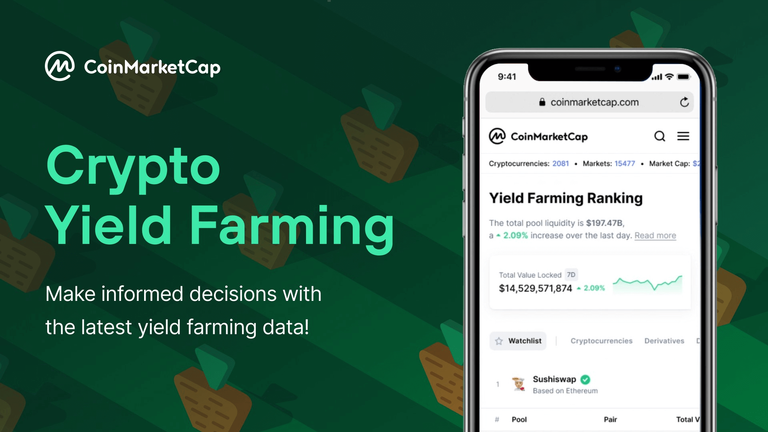In my previous. Post titled “Useful links for DEX and NFT users” I mentioned terms like Yield Farming, Automated Market Maker, Liquidity Mining Pools and Staking.
They all have 1 thing in common and that is that they are applications of Decentralised Finance.
In today’s post I’ll be sharing some information on both Yield Farming and Automated Market Makers, but before I get to that, let me briefly explain Decentralised Finance

Decentralised Finance or DeFi refers to financial (decentralised) applications or services that are carried out on a blockchain, which requires no central authority and replaces the middleman with something that is called a smart contract or DApps.
One can compare this as using traditional banking and financial services in combination with blockchain technology.
In order for DeFi to operate successfully, it needs a decentralised network/infrastructure like the Ethereum Blockchain or the Binance Smart Chain, which are currently the biggest players in the sector.
As Sid Coelho-Prabhu wrote on the Coinbase Blog:
“Dapps are designed to be global from day one — Whether you’re in Texas or Tanzania, you have access to the same DeFi services and networks. Of course, local regulations may apply but, technically speaking, most DeFi apps are available to anyone with an internet connection.”
So now that you know a little bit more about DeFi, let me get into the actual topic of this post.

Yield Farming:
Yield Farming is an innovative yet risky application in the DeFi space and is considered the biggest growth driver of the sector. It involves the practice of users providing their cryptocurrency as liquidity and earning rewards in return. These rewards can come in form of interest from lenders, % of the transaction fees or even in form of governance tokens. Most protocols now provide governance tokens as the reward for liquidity providers, which can be used to vote on the platform, stake to further benefit from annual interest or exchange them on centralised and decentralised exchanges.

On coinmarketcap.com under their “Top Crypto Yield Farming Ranking” page, the top 2 spots are occupied by Venus and Pancakeswap followed by Curve ranked number 3. The first two platforms are based on the Binance Smart. Chain while the third is based on Ethereum blockchain.
Personally, I’ve only used Pancakeswap and I find it a great platform to generate passive income. Of course I encourage anyone interested to do their own research, as platforms like these do carry some form of risks. Despite them, I’ve grown fond of Pancakeswap and their native token “Cake”, as I’ve been using their services for a while now and only had positive experiences so far.
Pancakeswaps platform also acts as a an Automated Market Maker which I will cover further below.
Pancakeswap’s full suite of services include;
- - “Farms” where one provides a liquidity pair of two different assets to earn Cake
- - "Pools" where one stakes Cake or different single assets to earn Cake,
- - "Team Battles" where the competition involves users trading a specific pair on their platform to earn Cake, NFT’s and points at the end
- - "Lottery" where users can buy a lottery ticket by spending 1 cake and stand the chance to win a substantial amount of Cake (at the time of writing the Prize pot is 1903. Cake where Cake=$23.94)
- - "NFT/Collectibles" where users can earn Pancakeswap themed NFT’s
(Note: If you receive any NFT’s from Pancakeswap, you can send them and safely store them on your Trustwallet - to which I wrote an article on as well : https://www.nyx-labs.com/useful-links-for-dex-and-nft-users/ )

Automated Market Maker (AMM):
Automated Market Makers are another kind of protocol that does not use an order book like traditional exchanges, instead depends on a mathematical formula to price assets. This formula varies from each protocol, but one thing they have in common is that they all determine the price of assets algorithmically
The way AMM’s work, is that trades aren’t peer-to-peer transactions rather a peer-to-contract transactions, where the trader interacts with a smart contract which “makes” the market to facilitate the transaction for you. This means that there is no need for a counter-party (another trader) on the other side to make the trade, while the liquidity in smart contracts is provided by users themselves, who are also called Liquidity Providers.
Some of the biggest AMM’s are Uniswap, considered the pioneer of AMM’s, then Curve and Pancakeswap.
If you are unsure of this, do your own research - This is not considered financial advice - but is definitely worth a try, even with small amounts of liquidity.
Sources:
https://forkast.news/explainer-decentralized-finance-defi-guide/
https://coinmarketcap.com/alexandria/article/what-is-yield-farming
https://blog.coinbase.com/a-beginners-guide-to-decentralized-finance-defi-574c68ff43c4
https://coinmarketcap.com/yield-farming/
added to the river via Styx Exxp : https://www.nyx-labs.com/yield-farming-and-automated-market-makers/